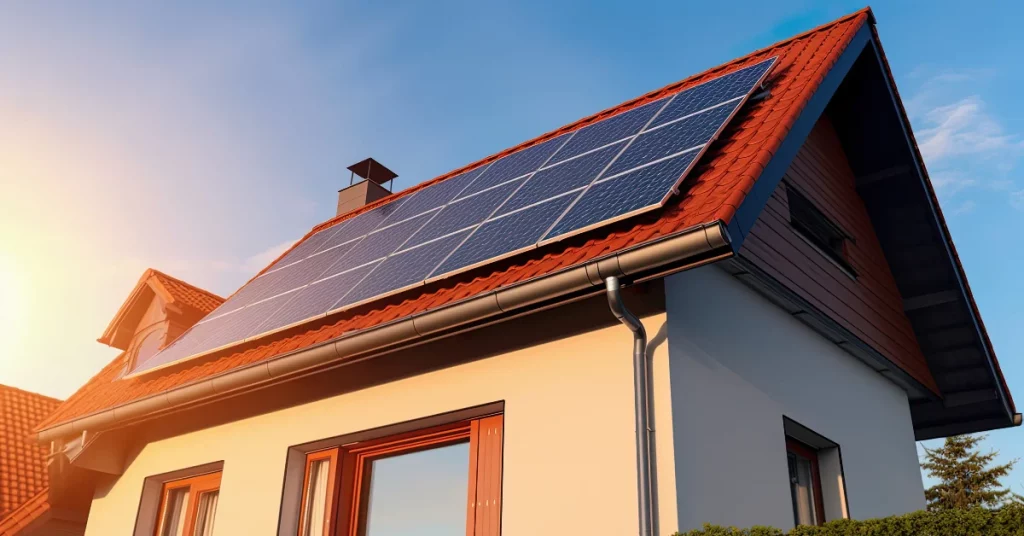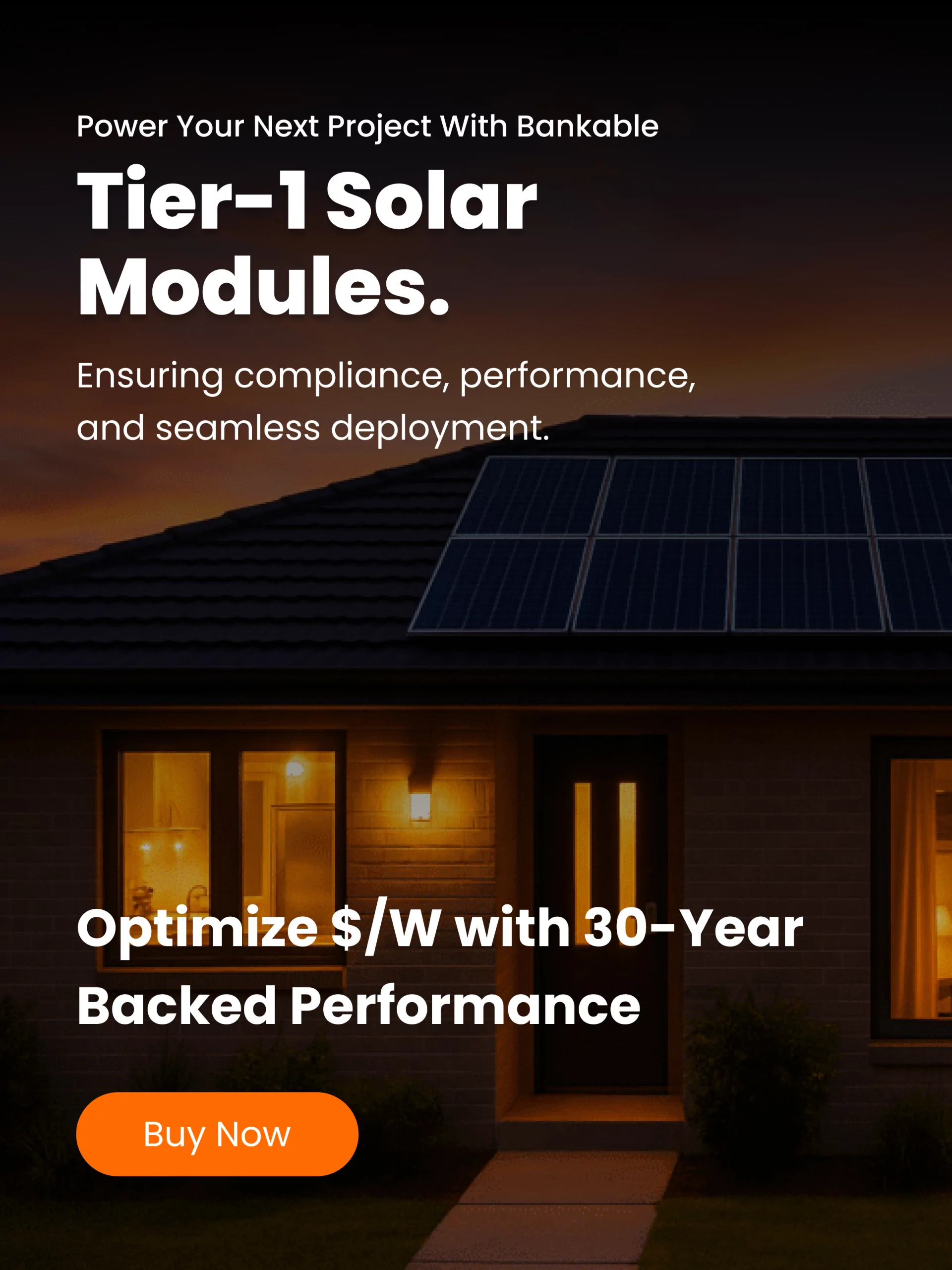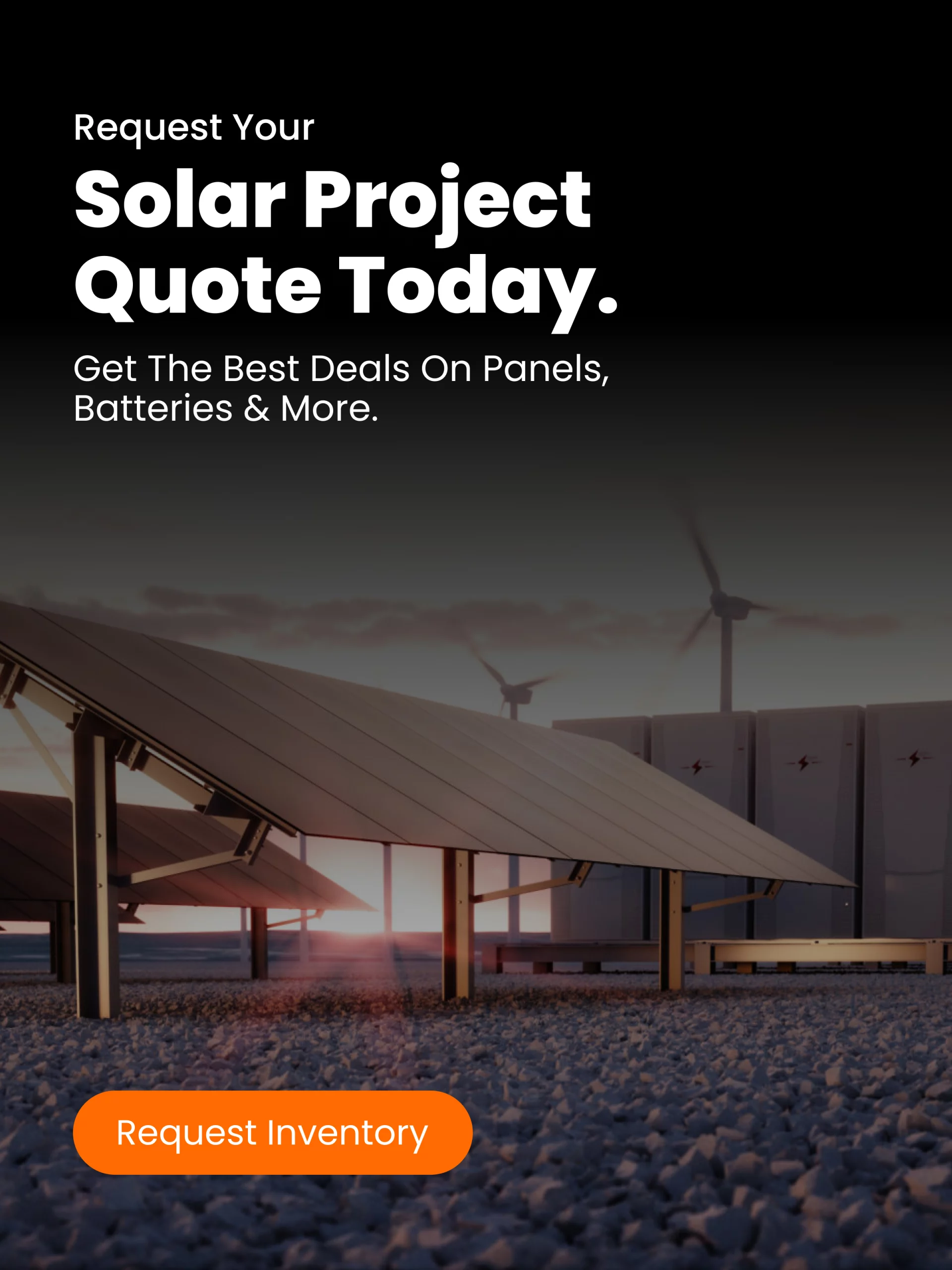When you look at a rooftop or ground-mounted solar array, the shiny panels get most of the attention. Yet beneath them lies a crucial system that often goes unseen: the solar panel racking, also known as the mounting or framing system. Simply put, racking is the engineered structure that securely holds solar modules in place, whether on a roof, over a parking lot, or on the ground, and ensures that your entire solar installation functions safely and effectively.
Because racking supports one of your most valuable assets (the solar modules) and the entire installation must last 20-30 years or more, picking the right racking system matters for long-term performance, durability and return on investment.
The role of racking systems in a solar installation
Solar racking systems perform several key tasks:
- Structural support: They physically anchor the solar panels to the surface (roof, ground) and must handle loads like wind, snow, and vibration.
- Orientation and tilt: Racking often determines the angle and direction of the panels, helping to maximize sunlight exposure and overall energy production.
- Ventilation and spacing: On rooftops, racking provides a gap between the roof surface and the panels, allowing heat to escape and maintaining better efficiency.
- Durability and maintenance access: High-quality racking simplifies maintenance and inspection of panels, wiring and mounts over the life of the system.
In short, racking is more than just metal rails under your panels, it is the foundation of a reliable solar installation.
Types of racking systems
Choosing the right racking type depends on your surface, environment and budget. Here are major categories:
Roof-mounted racking
Most residential solar installations use roof mount racking. The method differs depending on roof type: pitched vs flat roofs. On pitched roofs, racks are mounted parallel to the roof or at a slight tilt. On flat roofs, racks may include tilt frames to angle panels toward the sun. The roof material, orientation and structural condition all matter.
Ground-mount racking
When roof mount is not feasible (due to shading, roof condition or limited area), ground-mounted racking is an option. These systems raise panels off the ground and orient them for optimal sun exposure. They tend to cost more because of foundations, land preparation and structural elements.
Carport, awning or canopy racking
In commercial applications or parking lots, racking can create solar carports or shaded awnings. These systems require more structural engineering because they must handle both solar loads and environmental forces while serving dual purposes (vehicle shading, solar generation).
Trackers and advanced mounts
Some large installations use tracking systems that follow the sun’s path. The racking supports moving components and adds complexity and cost but may boost energy yield. While less common in small residential systems, tracking is relevant in utility or large commercial applications.
Key factors to evaluate when selecting racking
When comparing racking options for your solar project, keep these factors in mind:
Material and corrosion resistance
Racking is typically made from aluminum, stainless or galvanized steel. Aluminum is lightweight, corrosion-resistant and common for rooftop installations. In coastal or highly corrosive environments, you might need stainless or specialized coatings.
Structural load and local conditions
Your racking must accommodate local wind speeds, snow loads, seismic activity and any roof load constraints. For example, installers in hurricane-prone zones may select systems with special certification or anchoring.
Roof condition and attachment method
If your roof is old, needs replacement or uses specialty materials (tile, slate, metal), racking must be compatible. Flashing, mounting feet, torque specifications and avoiding leakage all matter.
Tilt, orientation and airflow
Racking that provides proper tilt optimizes performance. On flat roofs, tilt frames help. On pitched roofs, racking spacing matters for airflow and cooling. Overheating can reduce panel output.
Installation speed and cost
Racking systems that are pre-engineered, with simplified parts and fewer custom components, reduce labour time and installation risk. That can reduce project cost and ramp up speed.
Warranties and manufacturer support
Because racking stays under panels for decades, you’ll want warranties and brand reputation. Some systems provide 20-25 year warranty coverage, matching the lifespan of panels. Checking certification (e.g. UL2703 in U.S.) is advisable.
Cost and planning considerations
Solar racking may only represent a small portion of a system’s cost, but it still influences total cost and performance. For example, engineers estimate racking costs around $0.10 per watt in many rooftop residential systems, roughly 3-5% of total solar installation cost.
When quoting your solar project, here’s what to check:
- Is the racking vendor specified or just “standard mount”?
- What wind, snow, and snow drift ratings apply?
- What attachments go through the roof and what warranties cover leaks?
- Are tilt or tracking features included (if applicable)?
- How many distinct roof planes or zones exist and how does racking handle transitions?
Maintenance and long-term performance
While racking is low-maintenance compared to moving parts like inverters, it still requires attention:
- Inspect for loose bolts, flashing integrity and anchor points especially after extreme weather.
- Ensure drainage, cleaning access and no debris accumulation beneath panel arrays.
- Wiring, conduits and grounding components often run along rails, checking them helps prevent long-term faults.
- Panel replacement or re-tilt might be easier with modular racking that allows access.
Good racking design now makes future system servicing simpler and less costly.
How to choose the right racking system for your project
Whether you’re installing a residential system or a large commercial array, here’s a strategy to choose the right racking:
- Begin with a roof/site assessment: Check structural capacity, material type, shading, roof age and orientation.
- Identify environmental and code requirements: Wind zone, snow load, seismic zone and local building code or HOA rules.
- Compare racking system specifications: Material type, certification, maximum span, adjustability, tilt options and warranty.
- Get installer feedback and references: Ask about ease of installation, mounting time, parts availability and past projects.
- Plan for future flexibility: If you may expand your solar array or integrate battery or EV projects in future, pick racking that supports modular growth.
- Analyze cost versus value: Opting for ultra-premium racking may boost durability but ensure it makes business sense versus standard high-quality options.
Concluding thoughts
Solar panel racking might not be the most glamorous part of a solar installation, but it is absolutely foundational. Without solid racking you risk reduced panel performance, safety issues, leaks, wind damage or premature failure.
Properly designed and installed racking supports your system for decades. It ensures panels are oriented for maximum production, spaced correctly for cooling, securely mounted to withstand weather, and accessible for maintenance. By investing time into selecting the right racking system up front, you help ensure that your solar project delivers strong performance, long lifespan and excellent return on investment.
Whether you’re a homeowner, business owner or solar installer, remember: the rails beneath your panels deserve just as much attention as the panels themselves.
Sources
- “Choosing the best solar panel racking system”, GreenLancer Blog. (GreenLancer)
- “Solar racking: what you need to know”, Solar Mason. (solar-mason.com)
- “Solar racking overview”, EnergySage. (EnergySage)
- “A guide to solar panel racking systems”, Portlandia Electric Supply. (Portlandia Electric Supply)




